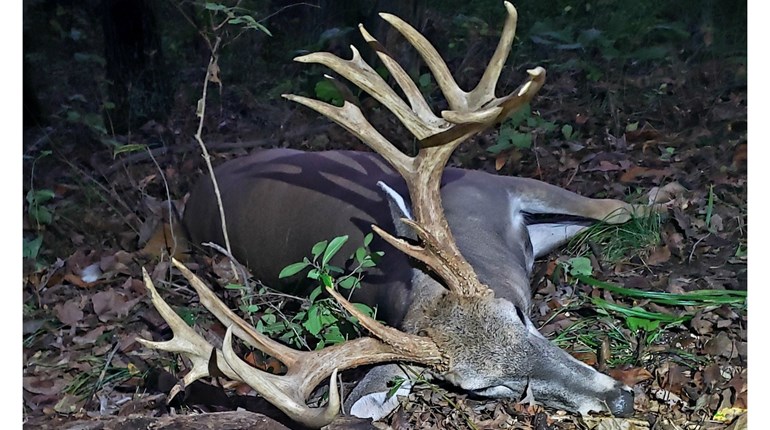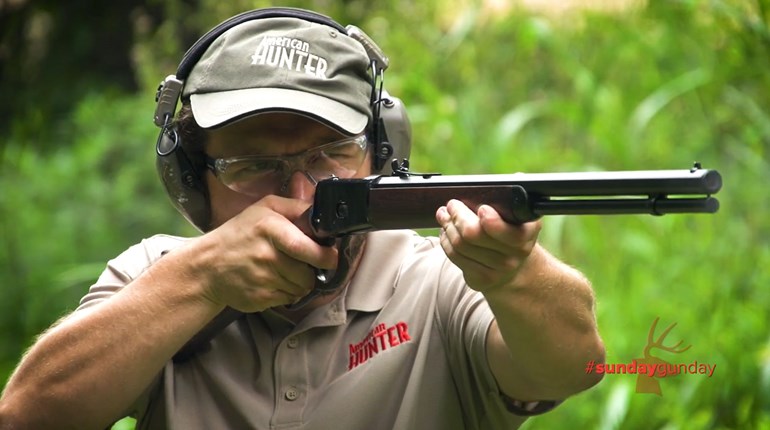** When you buy products through the links on our site, we may earn a commission that supports NRA's mission to protect, preserve and defend the Second Amendment. **

There are some problems that riflescopes can experience, but you should note that modern manufacturing techniques can make a real difference. There are three main issues:
1. Parallax
Many riflescopes suffer from a condition that stems from the inability of a scope to remain focused at all ranges. The compromise solution for most scopes is to design them to focus at infinity or one specific range. This serves most purposes and simplifies scope design. When a scope is properly focused at the chosen zero range, parallax will be minimal.
However, this is not acceptable for some applications, such as varmint shooting and hunting at long ranges. Under such conditions, parallax becomes a problem that must be addressed. Scope makers solve this problem by offering models with adjustable objective (AO) lenses. AO models incorporate adjustable objective bell housings with graduations marked on the traveling edge that allow quick and easy adjustment to remove parallax at any range. Alternately, some models locate the parallax adjustment in a third turret on the main tube for more convenience. Although AO and side-focus models cost more, shooters demanding enhanced accuracy often feel they are worth the asking price.
2. Sealing
Most quality scopes are sealed. This means the outer lenses and adjustment systems must be sealed against ingress of water, dust and dirt. This is very important, as dust or dirt inside the tube will degrade the image in several ways, mainly by appearing as black spots within the field of view. Dirt inside the tube can also jam the delicate adjustment system. Moisture inside the tube can cause fogging so that the shooter cannot see through it. Moisture can also cause corrosion of inner parts and surfaces.
Scopes are sealed at the factory by first attaching them to a vacuum pump that removes all air from inside the tube. The tube is then filled with dry nitrogen gas to prevent fogging and then subsequently sealed. Of course, if you remove a turret or the ocular bell housing, the nitrogen gas may escape, thus compromising your scope's anti-fogging capability.
Many high-quality scopes have double seals to ensure gas-tight integrity. However, no scope is permanently waterproof despite advertising claims to the contrary. Wear, tear, impacts and age all conspire against the tube holding the nitrogen gas. For this reason, most scope manufacturers will reseal and refill a scope at modest cost.
Want to check your scope for leaks? Try this simple test: Fill a sink or wash basin with warm water. Immerse your scope in the water for five minutes and check for bubbles coming from the tube. Bubbles mean leakage and such scopes should be sent back to the manufacturer for resealing and refilling.
3. Shock and Recoil
Newtonian physics are not kind to riflescopes. In addition to maintaining their accuracy, reliability and water-tight integrity, scopes must withstand the considerable shock of repeated recoil many times the force of gravity. The delicate adjustment mechanisms and lens mounts are particularly susceptible to high G loads and must be designed accordingly. Scope makers are well aware of this and have designed shock resistance into their products. They have been so successful that shock resistance is now taken for granted by shooters and manufacturers alike.
Air rifles are a special case. Be careful when using conventional riflescopes on a spring-piston air rifle. If you do, the lenses may come loose, sometimes within a few shots, and your scope could be damaged or ruined. The reason is that spring-piston air rifles recoil in both rearward and then forward directions while a conventional rifle recoils only rearward. Thus, a riflescope for a conventional firearm need resist G forces in only one direction—rearward. Air rifle scopes must resist G forces in both directions. This requires a special scope designed for the purpose.
1. Parallax
Many riflescopes suffer from a condition that stems from the inability of a scope to remain focused at all ranges. The compromise solution for most scopes is to design them to focus at infinity or one specific range. This serves most purposes and simplifies scope design. When a scope is properly focused at the chosen zero range, parallax will be minimal.
However, this is not acceptable for some applications, such as varmint shooting and hunting at long ranges. Under such conditions, parallax becomes a problem that must be addressed. Scope makers solve this problem by offering models with adjustable objective (AO) lenses. AO models incorporate adjustable objective bell housings with graduations marked on the traveling edge that allow quick and easy adjustment to remove parallax at any range. Alternately, some models locate the parallax adjustment in a third turret on the main tube for more convenience. Although AO and side-focus models cost more, shooters demanding enhanced accuracy often feel they are worth the asking price.
2. Sealing
Most quality scopes are sealed. This means the outer lenses and adjustment systems must be sealed against ingress of water, dust and dirt. This is very important, as dust or dirt inside the tube will degrade the image in several ways, mainly by appearing as black spots within the field of view. Dirt inside the tube can also jam the delicate adjustment system. Moisture inside the tube can cause fogging so that the shooter cannot see through it. Moisture can also cause corrosion of inner parts and surfaces.
Scopes are sealed at the factory by first attaching them to a vacuum pump that removes all air from inside the tube. The tube is then filled with dry nitrogen gas to prevent fogging and then subsequently sealed. Of course, if you remove a turret or the ocular bell housing, the nitrogen gas may escape, thus compromising your scope's anti-fogging capability.
Many high-quality scopes have double seals to ensure gas-tight integrity. However, no scope is permanently waterproof despite advertising claims to the contrary. Wear, tear, impacts and age all conspire against the tube holding the nitrogen gas. For this reason, most scope manufacturers will reseal and refill a scope at modest cost.
Want to check your scope for leaks? Try this simple test: Fill a sink or wash basin with warm water. Immerse your scope in the water for five minutes and check for bubbles coming from the tube. Bubbles mean leakage and such scopes should be sent back to the manufacturer for resealing and refilling.
3. Shock and Recoil
Newtonian physics are not kind to riflescopes. In addition to maintaining their accuracy, reliability and water-tight integrity, scopes must withstand the considerable shock of repeated recoil many times the force of gravity. The delicate adjustment mechanisms and lens mounts are particularly susceptible to high G loads and must be designed accordingly. Scope makers are well aware of this and have designed shock resistance into their products. They have been so successful that shock resistance is now taken for granted by shooters and manufacturers alike.
Air rifles are a special case. Be careful when using conventional riflescopes on a spring-piston air rifle. If you do, the lenses may come loose, sometimes within a few shots, and your scope could be damaged or ruined. The reason is that spring-piston air rifles recoil in both rearward and then forward directions while a conventional rifle recoils only rearward. Thus, a riflescope for a conventional firearm need resist G forces in only one direction—rearward. Air rifle scopes must resist G forces in both directions. This requires a special scope designed for the purpose.






































